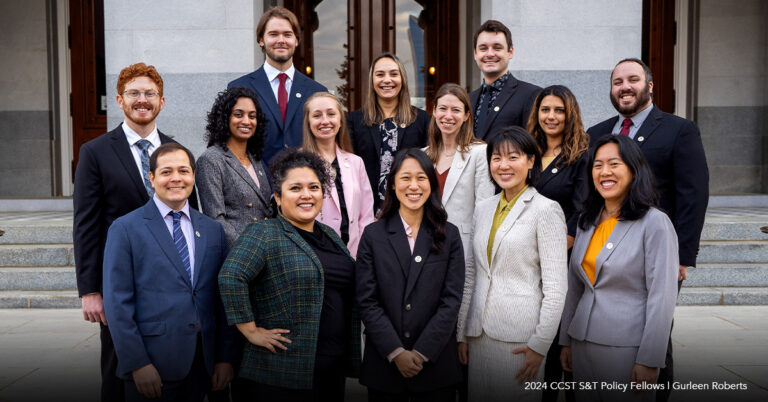Update: Applications for the CCST Science & Technology Policy Fellowship Have Closed
Staying The (New) Course: NASA’s New Approach
June 10, 2010 | CCST Newsroom | Contact: M. Daniel DeCillis

On April 15, at the Kennedy Space Center in Florida, President Obama outlined a strategy for human spaceflight that increases NASA’s budget by $6 billion over the next five years. His plan represents an ambitious effort to foster the development of path-breaking technologies; increase the number, scope, and pace of manned and unmanned space missions; make human spaceflight safer and more efficient; and help create thousands of jobs. It also represents a departure from the direction taken by the previous administration, cancelling the Constellation human spaceflight program and changing the next manned mission target from the moon to an asteroid.
The new focus for NASA has received criticism from some, but in large part reflects the recommendations of the Review of U.S. Human Space Flight Plans Committee, presented last fall.
“We concluded that, in order to conduct a meaningful human spaceflight program beyond low earth orbit, we would need to spend an additional $3 billion a year,” said CCST Council Chair Charles Kennel, Distinguished Professor of Atmospheric Science, Scripps Institution of Oceanography, who served on the committee.”The president made a fateful decision when he outright canceled the program of record-the so-called ‘Constellation’ program. Had NASA received additional funding as promised, it might have been possible to complete the Constellation program on schedule. That funding never materialized, and the President chose not to make up what had become a large difference.”
The president’s new plan modifies President Bush’s Vision for Space Exploration (VSE) by changing the approach to crew and cargo transportation to low Earth orbit (LEO). In the previous plan, NASA was to develop its own crew transportation system, comprised of two different rockets and a crew capsule, to send astronauts to LEO, including to the International Space Station (ISS). The capsule component would be augmented over time to provide deep space transportation capability. Simultaneously, commercial transportation capabilities would be allowed to evolve, eventually taking over responsibility for crew transportation to LEO. The plan announced by President Obama makes reliance on commercial transportation of crew to LEO the primary plan, while retaining a secondary NASA-developed crew capability, and investing in technology to enable the creation of a large heavy lift vehicle capable of exploration beyond low earth orbit.
The establishment of a base on the Moon would no longer be considered the primary near- to medium-term objective of the American human spaceflight program. Instead, President Obama has made rendezvous with and landing on an asteroid in 2025 the next major goal for NASA. From there, NASA will continue with further deep space exploration, leading to a human mission to orbit Mars in the mid 2030s, with a landing to follow at some point thereafter.
Despite the continued focus on human spaceflight, the cancellation of the Constellation program, which has already cost billions, has generated opposition.
“There is a very large problem with Congress’ reception of the budget for human spaceflight,” said Kennel.”One could have predicted that cancelling the Constellation program would be politically controversial, but I for one did not anticipate the firestorm of opposition from members of Congress whose districts are affected by the cuts.”
It is worth weathering the opposition because, according to Kennel, there are many positive things about the proposed budget for NASA, and there is good evidence that the commercial and international partnerships cited by the Obama administration can work.
“Aside from the space station itself, the most valuable asset produced by the ISS project has been the proven and tested working-level relationships among the partners,” said Kennel.”This partnership has weathered budget problems, changes in governments, lapses in commitments, and the Columbia tragedy. It could evolve the global partnerships that will be needed for human exploration beyond low Earth orbit, to asteroids, the moons of Mars, and eventually Mars itself.”
In many ways the new budget is a good one for NASA, providing an overall increase of a billion dollars per year with improves funding for aeronautics and for a long-needed advanced technology development program. No science program is taking a funding cut, and some, especially earth science, are increased, a welcome change from the trends of recent years.
“Space exploration connects with the global public, and NASA’s leadership in space promotes American leadership in the world,” added Kennel.”Let us hope the budget disputes can be settled soon, lest the other good things in the NASA budget languish.”






